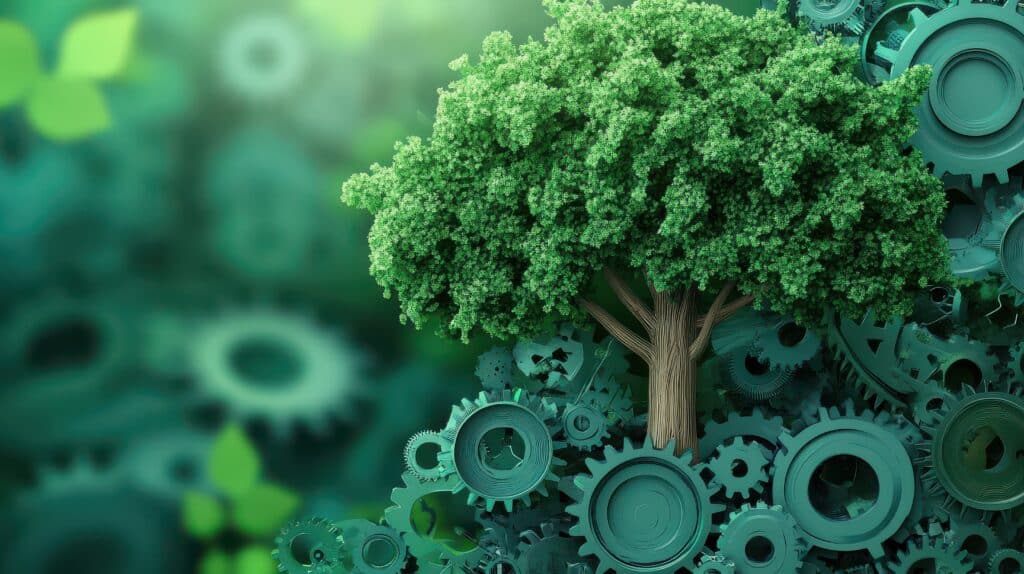February 27, 2025
What is a green maintenance strategy?

Green maintenance emphasizes sustainable practices in the upkeep of industrial facilities. By leveraging maintenance expertise and integrating green maintenance strategies, industrial companies can enhance operational efficiency, reduce environmental impact, and promote more sustainable production.
In the industrial maintenance field, a green maintenance strategy involves implementing actions and processes that minimize waste, conserve resources and lower carbon footprints. Beyond supporting environmental sustainability, these initiatives also provide direct economic benefits by optimizing asset utilization and reducing costs.
Three key areas
At Quant, sustainability is driven by three focus areas: resource efficiency, predictive maintenance, and waste reduction.
Nicklas Holfelt, Senior Operational Excellence Engineer at Quant, emphasizes the importance of energy efficiency in achieving sustainability goals.
“By implementing energy-efficient technologies such as LED lighting, by supporting our customers in their work with variable-speed drives, and high-efficiency motors, we can significantly lower electricity consumption. This not only results in cost savings but also reduces carbon footprints, making operations more sustainable in the long run.”
Predictive maintenance plays a crucial role in this strategy by improving both efficiency and sustainability. Quant utilizes digital solutions that provide real-time insights into machine performance, allowing for continuous improvements in energy and resource management. Holfelt highlights the advantages of this approach.
“By utilizing sensors and analytics, we can anticipate equipment failures before they occur. This proactive approach prevents unnecessary energy consumption and avoids costly repairs, ultimately reducing material waste and improving overall operational reliability.”
Waste reduction is another essential component of a sustainable business strategy. Recycling parts, minimizing packaging waste, and finding innovative ways to repurpose materials instead of discarding them can make a significant impact.
“By adopting these practices, businesses can lower waste disposal costs and contribute to a circular economy that prioritizes resource efficiency and environmental responsibility,” Holfelt adds.
Reliability maintenance – A lifecycle approach
Reliability maintenance is a fundamental part of Quant’s approach to sustainability. By incorporating life cycle management, the company ensures longer asset lifespans, reduced environmental impact, and improved cost efficiency.
“This involves selecting eco-friendly materials and designs that facilitate repair and recycling. Additionally, we implement energy-efficient processes to minimize waste in the production while focusing on predictive maintenance, energy efficiency, eco-friendly consumables, and system optimization to reduce resource use.”
At the end of an asset’s life cycle, responsible decommissioning practices ensure minimal waste through recycling and reuse.
“Continuous data analysis enables ongoing optimization, allowing us to adopt new green technologies as they emerge. This commitment to innovation strengthens our ability to support sustainability across all operations,” Holfelt adds.
The role of digital tools in green maintenance
Digitalization plays a key role in enhancing green maintenance. Quant utilizes advanced monitoring tools such as quantPredict, where sensors installed on machinery provide real-time performance data.
“These sensors identify inefficiencies, such as energy overuse or excessive wear, and allow for early detection that prevents unnecessary repairs and reduces energy waste. Machine learning algorithms also predict when equipment is likely to fail, enabling timely maintenance that minimizes unplanned downtime, saves energy, and extends machinery lifespan.”
In addition, quantWorx, a Computerized Maintenance Management System (CMMS), enhances operational efficiency.
“With improved planning and scheduling, we can optimize resource utilization and reduce waste. Mobile tools also enable maintenance teams to access data in real time, track progress, and make informed decisions on the go, reducing paperwork and lowering the carbon footprint,” Holfelt notes.
Measuring environmental impact
Operational improvements significantly contribute to sustainability goals, and two critical indicators—Overall Equipment Effectiveness (OEE) and internal audits—provide key insights into the impact of green maintenance strategies.
“Higher OEE reflects better machine performance, fewer defects, and reduced downtime, leading to more efficient resource use. This minimizes the need for rework, scrap, and additional raw materials while making production processes leaner and more energy-efficient,” Holfelt explains.
Furthermore, internal audits highlight improvements in safety, process optimization, and sustainability practices.
“A higher internal audit score often correlates with smarter resource management and an overall commitment to environmentally responsible operational practices.”
While these improvements are often measured through operational metrics, their broader impact on sustainability is substantial.
“By increasing efficiency, reducing emissions, and minimizing waste, we reinforce our commitment to greener industrial operations,” Holfelt concludes.

